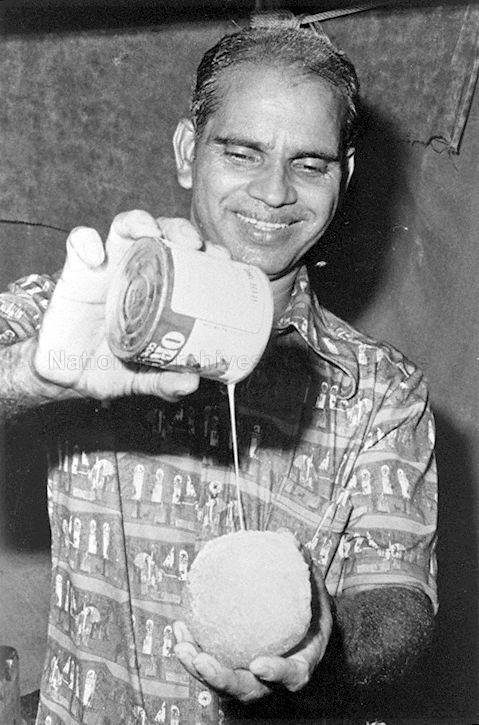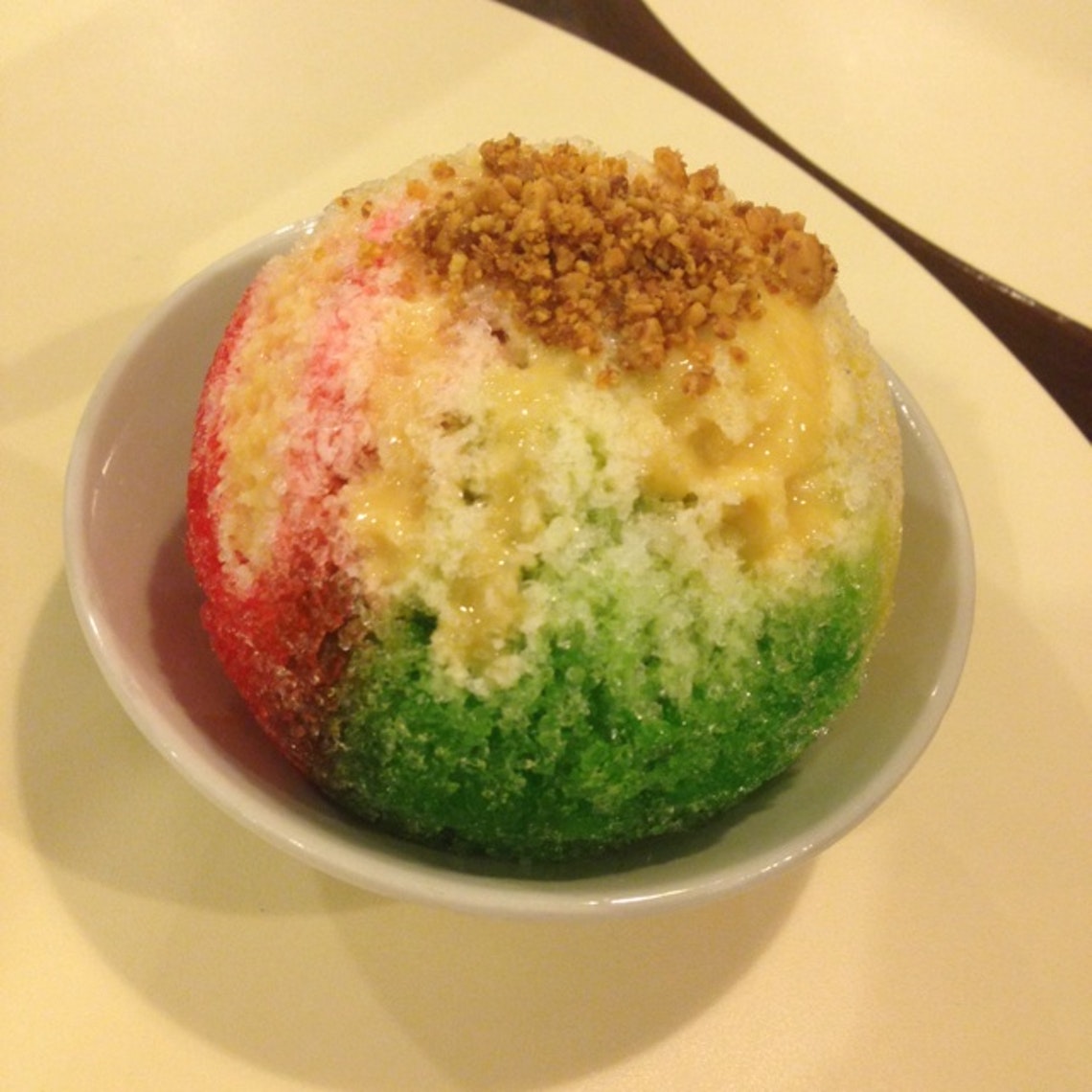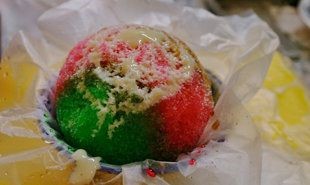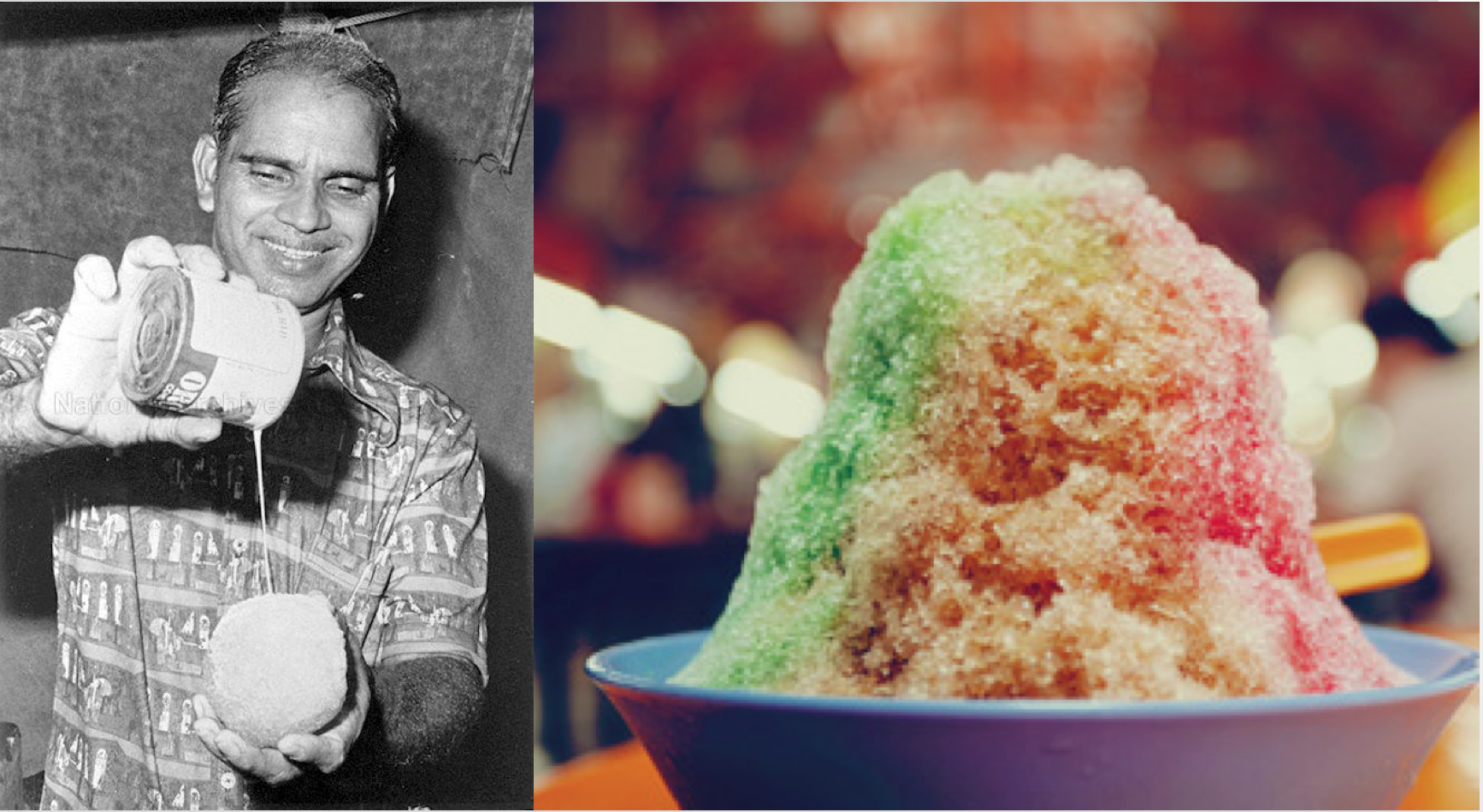The ice ball, sold at only 5-10 cents during the 1950s and 1960s, was a popular frozen treat for kids in the past.
It is made using shaved ice moulded (by hand) into the shape of a ball, and then drizzled with evaporated milk and various syrups in different colours. Some sellers added jellies or red bean in the centre of the ball as an additional treat.
Upon request, the seller could also cut the ball in half so it could be shared with a friend.
The peak of the dessert's popularity was in the 1950s and 1960s, where it could be found at various pushcarts all over Singapore.
 A pushcart hawker in the past. Source: NAS
A pushcart hawker in the past. Source: NAS
Somewhere along the way, it disappeared from the lives of Singaporeans.
We can think of some reasons why the ice ball died out.
Improvements in food hygiene standards, coupled with the emergence of an upgraded version of the ice ball (ice kacang) just made the ice ball a whole lot less appealing to people.
Food hygiene and eating habits
Itinerant hawkers were a real problem for the government of the day during the 1950s.
The stalls not only caused traffic congestion, but also posed as a health hazard given the unhygienic conditions of hawking. Hawking was related to typhoid and malaria outbreaks as well as rodent infestations.
To cope with this problem, itinerant hawkers had to be licensed and registered as part of a registration exercise in the 1960s. Licensed hawkers had to abide by certain basic public health standards, such as avoiding the contamination of food.
Eventually, hawkers were relocated to markets and hawker centres starting from the 1970s onwards, where they had access to proper sanitation, equipment and water supply.
As food preparation standards improved, the idea of the ice ball -- prepared and eaten with bare hands, served without a plastic sheet -- probably seemed slightly more unappealing.
 Photo from NAS.
Photo from NAS.
It can be argued, however, that the preparation methods could have evolved alongside hygiene standards.
Besides, many Singaporeans still eat using their bare hands today.
So what happened to the ice ball?
The ice ball evolved to something better
Another plausible reason for the demise of the frozen dessert ball is simply, the emergence of a better version.
 Photo from SG50.
Photo from SG50.
The ice kacang is just like the ice ball, but with more ingredients compared to the ice ball. The range of ingredients includes attap seeds, various jellies, corn, red beans, and even ice cream.
It is also served in a bowl and eaten with a spoon.
Because there are records of the ice kacang in local newspapers from as early as the 1970s, the ice ball and ice kacang probably coexisted for a period of time before the ice ball lost out to its fancier dessert counterpart.
[related_story]
Stayed dead?
Certainly, for many Singaporeans who grew up during the era where ice balls were prevalent, they have fond memories of it. In fact, the memory of handling it with their (unwashed!) bare hands often made it all the more memorable.
But what about the younger generation who never grew up with it?
Ice kacang > Ice ball
We asked some millennials in our office if they would choose to have an ice ball over a bowl of ice kacang. The most common response? Yes, but only for the novelty. Otherwise, it's ice kacang all the way.
There are some obvious benefits that ice kacang brings, like the quantity of ingredients it contains compared to the ice ball.
Some colleagues also pointed out that eating ice kacang (in a bowl, with a spoon) is less messy and cumbersome as compared to fumbling with an ice ball.
Perhaps this concern is best illustrated by how the ice ball is served these days in Singapore -- in a bowl.
Sinpopo, a retro/nostalgic cafe, sold the ice ball for a while (it is no longer on their menu). Some customers ate it with a spoon, while others had a go at it with their hands:
 Photo via Burpple user Daphne Yong.
Photo via Burpple user Daphne Yong.
The ice ball also makes rare appearances at certain special occasions, like at the Singapore Food Festival. It is served with a plastic sheet, in a container/bowl:
 Photo from gov.sg.
Photo from gov.sg.
With the bowl, one does not have to hold onto the ice ball all the time, and with the plastic sheet/spoon, one need not worry about finding the nearest sink. These days, convenience and hygiene are prized.
Besides, why eat the ice ball when we have access to a similar, better version with more ingredients?
Perhaps the ice ball is indicative of how times have changed, and so have our eating habits and preferences.
Top photo composite image from SG50 and NAS.
If you like what you read, follow us on Facebook, Instagram, Twitter and Telegram to get the latest updates.
